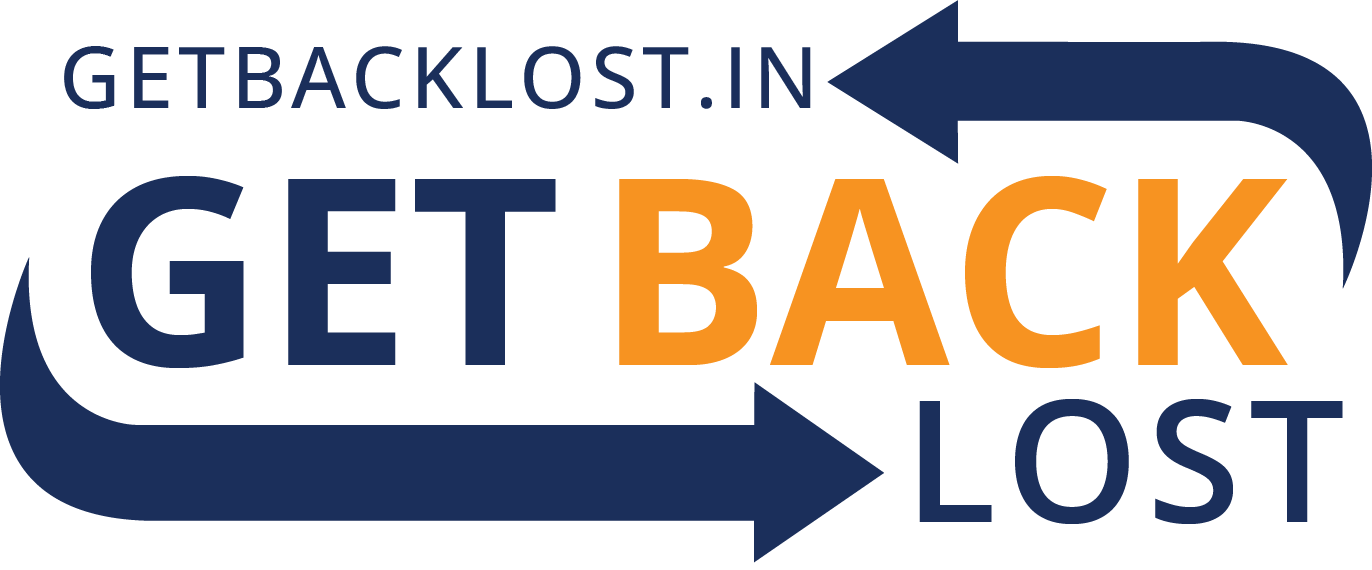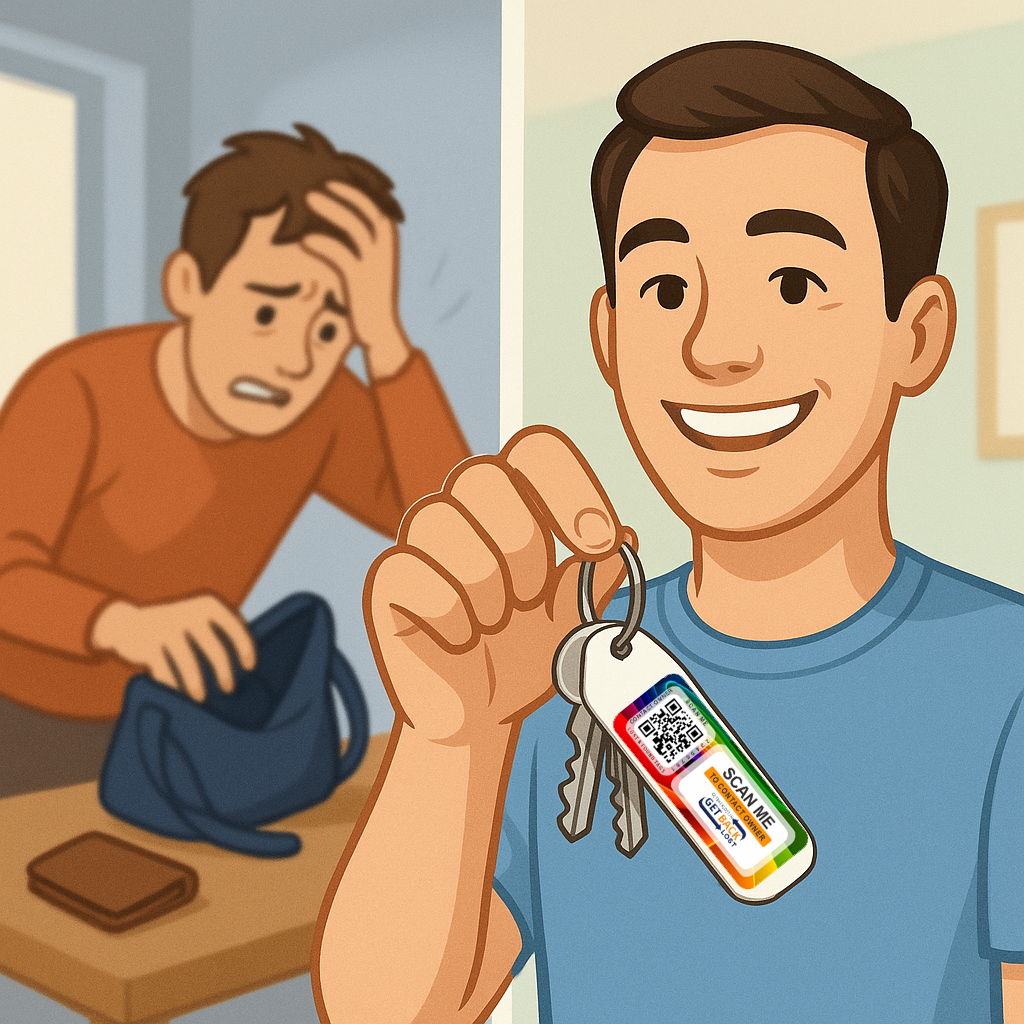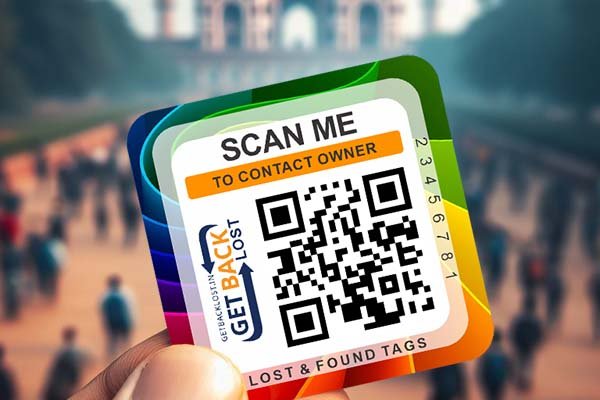It happens in an instant. That sickening lurch in your stomach when you pat your pocket, your bag, or your lap, and come up empty. Maybe it’s your wallet, your phone, or that treasured set of keys. The world seems to stop for a second as you frantically try to remember your last steps. The question that flashes in your mind is always the same: How to find lost item? And for so long, the answer has felt like a frustrating cycle of hoping, searching, and, more often than not, coming up empty.
But what if there was a better way? A proactive approach that takes the guesswork out of finding what you’ve lost? The traditional ways of recovering things are pretty outdated, and it’s definitely time for a solution that’s as smart as the things we carry.
The Old Way: A Painful Journey to Nowhere
Let’s be honest, the old lost-and-found system is a relic from a different time. It’s a journey filled with dead ends and a whole lot of emotional strain.
- The Frantic Retrace: You mentally retrace your steps, trying to recall every single movement. Was it in the coffee shop? The car? The crowded market? This process is exhausting, and it almost never works.
- The Phone Call Gauntlet: You spend hours on the phone, calling every place you visited, only to be met with indifferent voices saying, “Nope, haven’t seen it.”
- The Social Media Plea: You post a desperate message online, hoping that one of your hundreds of friends or followers in the area might have seen your item. It feels like shouting into a huge digital void, and it rarely gets a response.
- The Helpless Feeling: Ultimately, these methods leave you feeling powerless. You’ve done all you can, but success is entirely out of your hands.
- This is a system that wasn’t built for a fast-paced, modern life. It leaves you asking the same question over and over again: How to find lost item?
The Modern Solution: How To Find Lost Item?
The answer to how to find lost item? isn’t about better searching. It’s about proactive preparation. It’s about creating a digital safety net for your physical belongings before they ever go missing. This is the core idea behind GetBackLost.
GetBackLost is a simple, effective system built on the power of a tiny, durable tag. It’s a way to give your belongings a voice, a direct line back to you if they ever get lost. This is the proactive step that changes the game entirely.
A Simple Guide to Proactive Finding
Getting this set up is so easy, it’s almost a relief. The whole process is designed to bring you peace of mind and seriously bump up the chances of getting your stuff back.
Step 1: The Proactive Pause Before anything gets lost, you take a second to tag your valuable items. We’ve got these tags that come in different forms—some are tough stickers for your phone or laptop, others are rugged keychains and even pet tags. Just stick them on anything you’d absolutely hate to lose. That tiny little step is your proactive pause, giving you a sense of control and preparing you for anything.
Step 2: The Digital Bridge Next, you activate your tag. You just use your smartphone to scan the unique QR code on it. That little scan takes you to our secure website, where you can link the tag to your contact information. Everything you put in is completely private, and you only have to do it once. That QR code is basically a digital bridge, connecting your item to your own secure profile.
Step 3: The Moment of Discovery Now, here’s where the magic happens. If your item gets lost, and a kind person finds it, they’ll see the GetBackLost tag. All they have to do is scan the QR code with their smartphone. That simple action immediately pings you a notification, telling you your item has been found, and it does this without ever showing them your private info. The finder then gets sent to a secure page where you can chat with them directly to figure out how to get your item back. It’s truly the best answer to that question we all dread.
Real-Life Scenarios: When Preparation Pays Off
The versatility of GetBackLost makes it the perfect solution for almost any situation where you might need to know how to find lost item?
The Traveler’s Security Blanket: You’re rushing through the airport and accidentally leave your passport holder or carry-on bag at a coffee shop. If a GetBackLost tag is on it, a kind traveler or airport employee can scan it and get in touch with you immediately. You don’t have to go through a long, bureaucratic lost-and-found process. The answer to how to find lost item? becomes a simple phone notification.
A Parent’s Peace of Mind: My friend, a parent, recently told me she uses GetBackLost tags on her kids’ school bags and lunchboxes. Kids are naturally a little forgetful, and these items can get left behind on the bus or in the cafeteria. The tag makes it easy for a teacher or another parent to get in touch, saving everyone a headache and a lot of tears. She no longer has to worry about how to find lost item after a chaotic school day.
For Our Furry Family Members: I’ve also heard from pet owners who use GetBackLost tags on their dog’s collars. If your adventurous pet ever wanders a bit too far, a neighbor or a kind stranger can scan the tag and get in touch with you directly and privately. This is a fast and peaceful way to figure out how to find lost item when that item has four paws.
The Busy Professional: For those of us juggling a million things at once, from client meetings to deadlines, the last thing we need is to misplace our work laptop or important documents. Attaching a GetBackLost tag to these items provides a layer of professional security, ensuring that if they’re lost, they have a clear, simple path back to the office. It’s a crucial solution for how to find lost item? in a professional context.
The Bigger Picture: Beyond Just Finding
Beyond the obvious practical benefits, GetBackLost offers something more: peace of mind. Knowing that your valuable items are tagged and traceable provides a sense of security that reduces the anxiety associated with potential loss. It allows you to focus on your day, your trip, or your family, instead of a nagging worry. The answer to how to find lost item? is about more than just technology; it’s about a better way to live.



